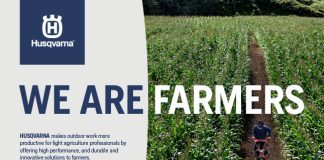
Photo: Supplied
Not all commercial farmers recognise the true value of soil quality. The emphasis has long been on artificial fertilisers, crop chemicals and soil tillage.
These products and practices have resulted in soil degradation across the world, and pushed up the cost of producing crops. This in turn has made it extremely difficult for small-scale and new farmers to survive.
READ Healthy soil helps ensure 98% packout rate of broccoli on KZN farm
The answer is to cut tillage to an absolute minimum or apply no-till practices and concentrate on increasing the level of humus, a specific type of organic matter in the soil.
Put another way, the farmer should ensure that all living creatures in the soil are cared for; these in turn will make the tons of minerals locked up in the clay particles available for the plants to take up.
This is a gradual process but will make farming more economical and productive. One very important aspect is the need to increase the earthworm population (see FW, 18 March). Under ideal conditions, earthworms can amount to more than 2t/ha.
Increased fertility
The soil and organic matter that pass through the gut of earthworms is enriched with available minerals and growth-promoting substances.
The casts (faeces) excreted by these creatures are highly stable. Apart from increasing soil fertility, they also increase the population of beneficial organisms, which further contribute to making minerals available and suppressing harmful organisms.
Over time, earthworms actually increase the depth of the fertile topsoil.
Earthworms also contribute to the recycling of nutrients. In a mineral soil that is low in micro-organisms, certain elements can be lost through leaching. I recently drove past maize lands that were yellow from lack of nitrogen due to leaching.
A cabbage farmer once told me that he had applied LAN six times at a rate of 200kg/ha and would still have to apply another due to leaching!
When there is enough living biomass in the soil, most of the nitrogen and many other elements are in the bodies of these organisms. This means that only excreted elements can be leached into the soil moisture, and then only by heavy rain.
The farmer will therefore lose only a small percentage of nutrients in this way. The soil on my lands has reached this state, and it saves me a great deal of money.
Tunnels
When tunnelling through the soil, earthworms coat the inside of the tunnels with slime. This stimulates an increase in beneficial bacteria and creates easy pathways for roots.
The earthworm species that burrow deep into the soil also create pathways for rapid flow of rainwater as well as movement of organic content and lime to the deeper layers.
READ Choose the right hydroponics system for your operation
To repeat, with a highly mineral soil that has limited humus, you have to be very careful to get all the minerals in sufficient quantity and in proportion for optimal plant growth. You can do this by using a soil analysis together with expert advice from fertiliser representatives. But it can get quite complicated.
With adequate organic content in the soil, these ratios become less critical. And with a healthy population of earthworms, the casts provide a buffering effect so that even when the minerals are a bit out of kilter, the plants are much less likely to be affected.
Helping plants absorb minerals
The elements that pass through the gut of an earthworm are readily available for uptake by plants. In contrast, the same minerals may not be available to plants in a mineral soil. Phosphorus is a good example; added in a fertiliser form, it can be made unavailable through soil acidity.
By having organic content in the soil and with earthworms present, you can save money on expensive fertiliser as well as create a buffered environment that reduces risk. It also makes farming easier; you don’t have to make the effort to understand complicated fertiliser interactions in the soil!
Remember that earthworms feed on decaying organic matter. For them to survive, this food must always be available. Crop residue can contribute to the soil’s organic content. Have something growing on the land at all times to build up the growth of organic matter.












